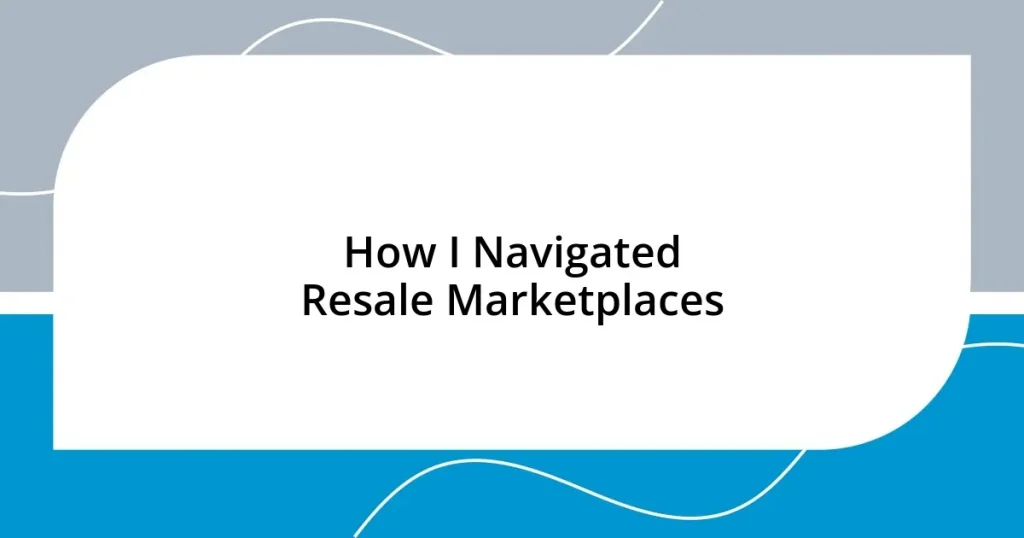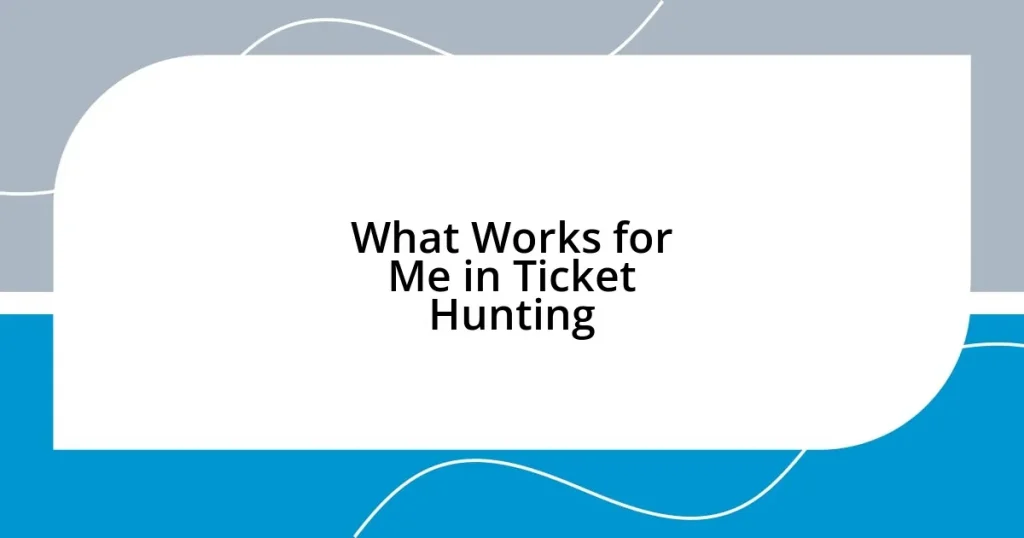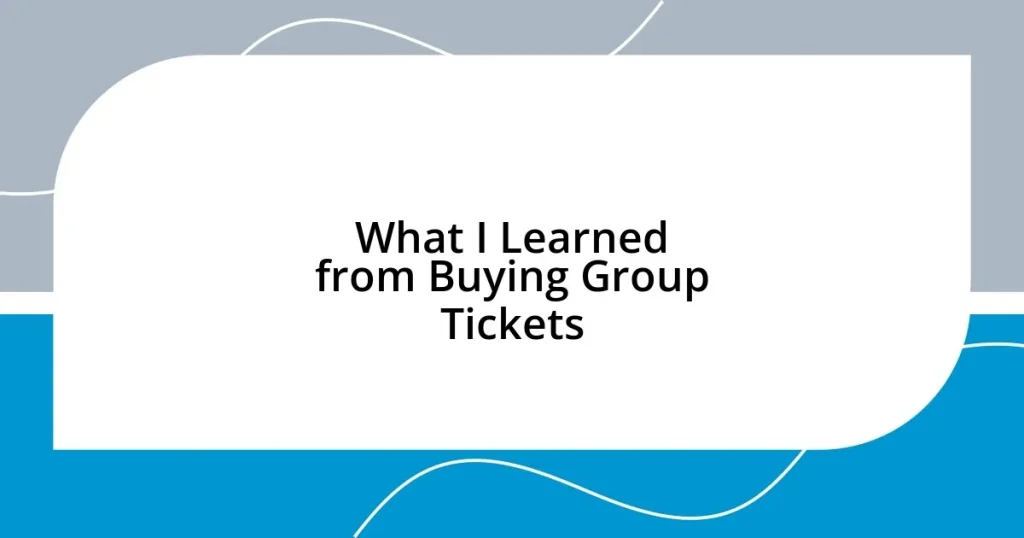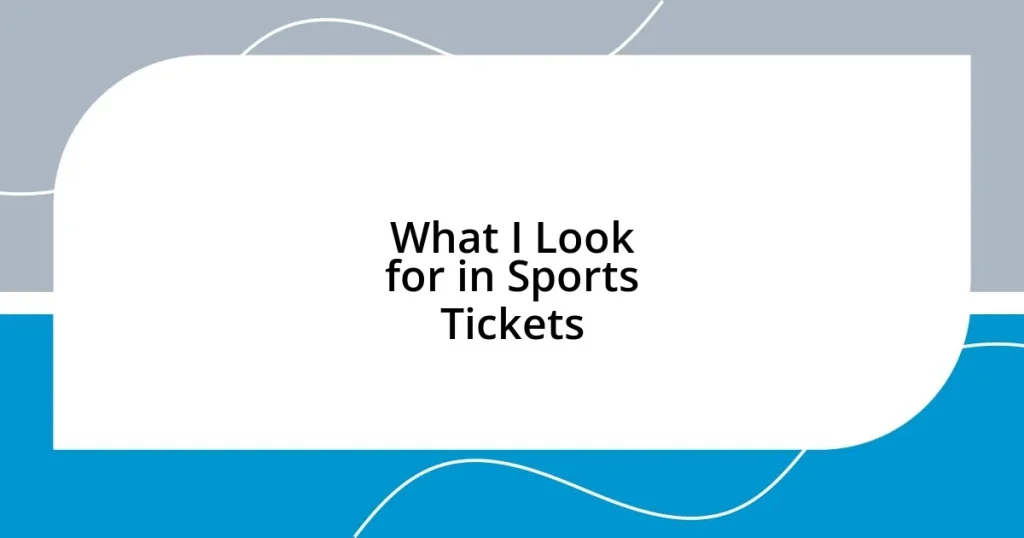Key takeaways:
- Resale marketplaces provide opportunities for sustainable shopping by allowing second-hand items to find new homes.
- Successful listings require high-quality photos, detailed descriptions, and competitive pricing to attract buyers.
- Engaging personally and promptly with potential buyers helps build rapport and can lead to successful sales.
- Clear shipping and return policies build trust, enhancing customer relationships and ensuring a positive buying experience.

Understanding Resale Marketplaces
Resale marketplaces are online platforms where individuals buy and sell second-hand or used items, ranging from clothing to electronics. I remember the excitement I felt scrolling through one of these sites for the first time. It was like stumbling across a treasure hunt, and I couldn’t help but wonder: “What hidden gems might I find today?”
These platforms operate on various models, including peer-to-peer sales, consignment, and auctions. Personally, I’ve had mixed experiences; I once scored an incredible vintage jacket through a direct buy, while a bidding war for a rare collectible left me feeling frustrated yet exhilarated. Have you ever felt that rush of anticipation waiting for an auction to end?
What’s fascinating is how resale marketplaces contribute to sustainability by giving items a second life. I often reflect on my own shopping habits: is it worth buying new when I can find a perfectly good item pre-loved? It’s not just about saving money; it’s about making choices that align with a more eco-friendly lifestyle.
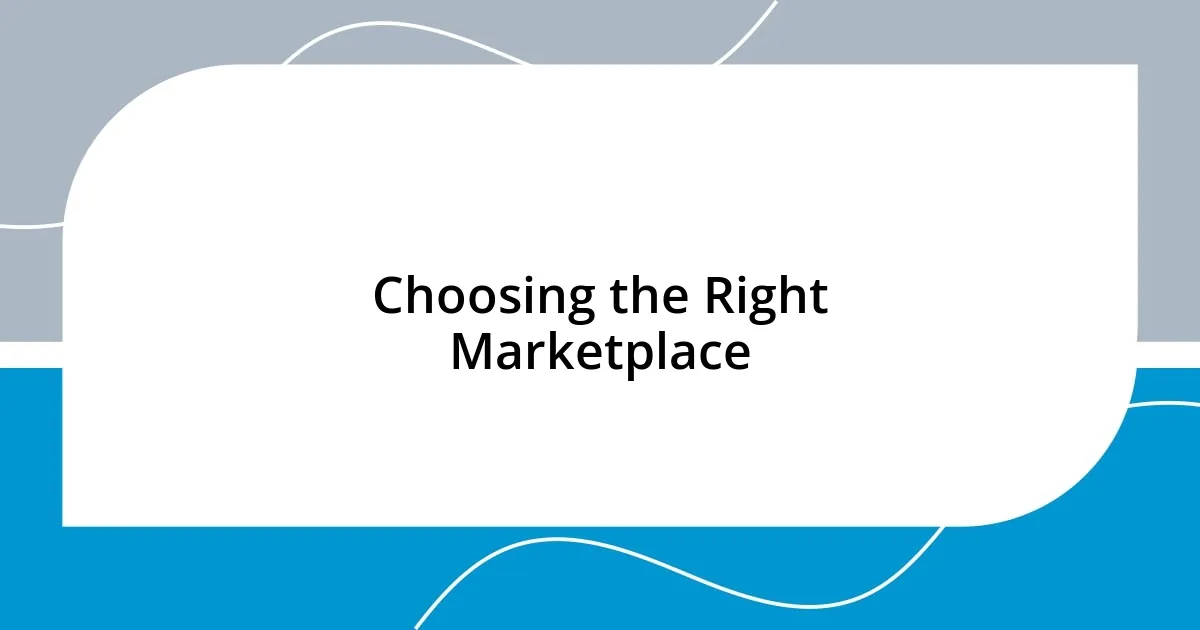
Choosing the Right Marketplace
When choosing the right marketplace, consider what you’re selling and who your target audience is. For instance, I once tried selling my old camera on multiple platforms, and each one attracted a different demographic. Understanding your audience can significantly impact your success in making a sale.
Another important factor is the fees and commission structures of each platform. I learned this the hard way when a surprise fee cut into my profits after selling a beloved pair of sneakers. Before listing an item, I recommend doing a little math to see how much you’ll truly earn after fees. Transparency in fees can really shape my experience, both positively and negatively.
Lastly, consider the user interface and support services of each marketplace. I personally enjoy platforms that are easy to navigate and have responsive customer service. When I faced an issue with a sale, quick help made all the difference, turning a potential headache into a smooth resolution. Having user-friendly features can really enhance the selling experience.
| Marketplace | Key Features |
|---|---|
| Platform A | User-friendly, low fees |
| Platform B | Wide audience, auction option |
| Platform C | Niche focus, high engagement |
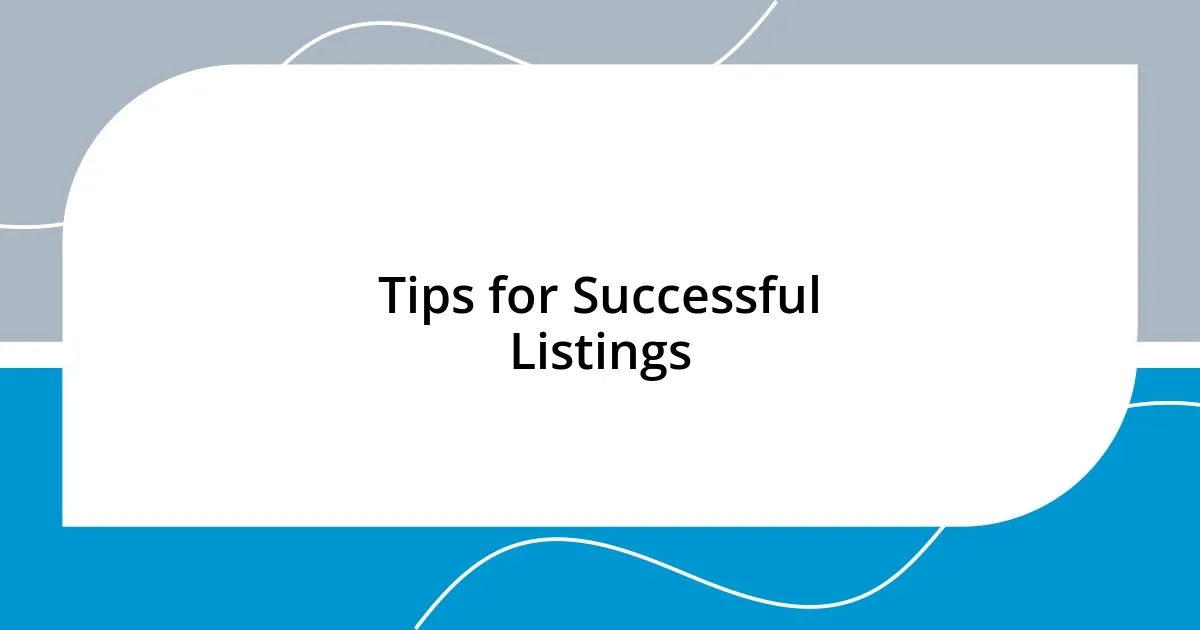
Tips for Successful Listings
When it comes to crafting successful listings, I can’t stress enough the importance of high-quality photos and detailed descriptions. I remember listing my first vintage record; I took so many pictures that I was worried I’d seem excessive. But when I finally sold it for a great price, I realized that each angle and nuance really helped potential buyers connect.
Here are some tips that have worked well for me:
- Bright and Clear Photos: Use natural lighting and multiple angles. A well-lit image of your item can spark interest like nothing else.
- Detailed Descriptions: Be honest and thorough. Mention any imperfections and include measurements if relevant, as transparency builds trust.
- Keywords Matter: Use search-friendly terms that buyers might use. It can have a huge impact on visibility.
- Competitive Pricing: Research similar items. I once undervalued a pair of shoes and regretted it later, as I could have earned more!
- Engagement: Respond promptly to inquiries. I’ve won over buyers just by being friendly and answering their questions quickly.
Another crucial aspect is timing your listings appropriately. I found that certain items do better at specific times of the year. Selling summer clothes in June may lead to faster sales, while winter gear tends to move more quickly in the fall. One winter, I held onto a cozy sweater until the snow fell and felt daunted by the waiting. But when I finally listed it at the season’s peak, I couldn’t believe how quickly it sold—sometimes, patience really pays off!
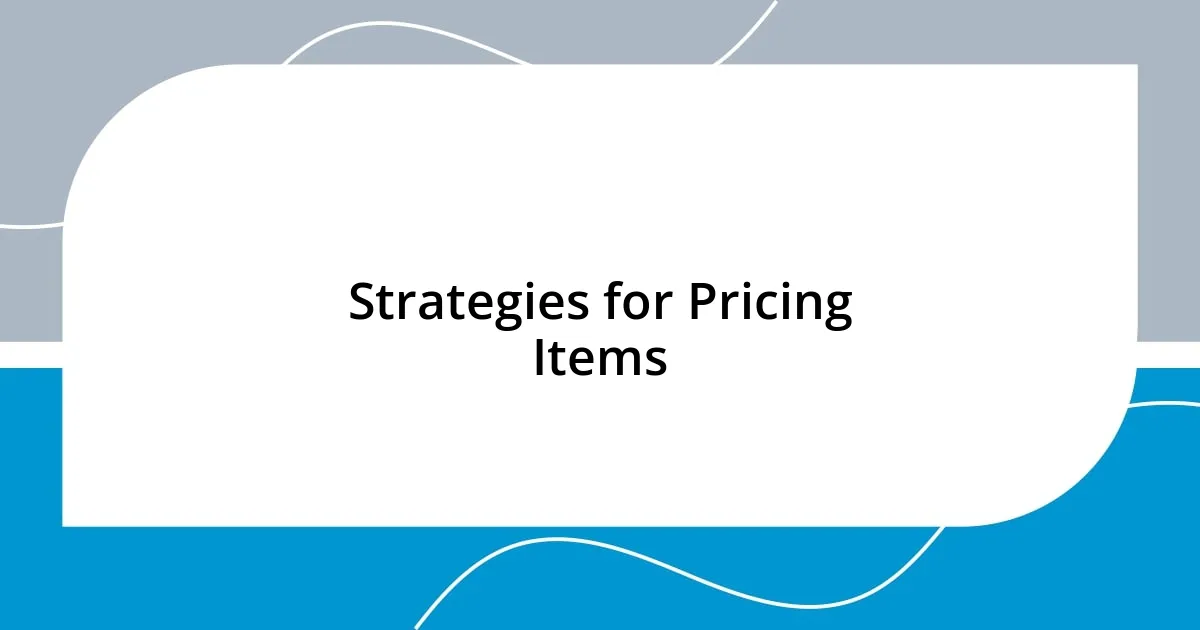
Strategies for Pricing Items
When it comes to pricing items, I believe that starting with thorough research is key. For example, I once sold an antique watch and took several hours to compare prices across different marketplaces. This not only helped me set a competitive price but also gave me insights into the demand level, which can vary widely even for similar items.
I also encourage considering your items’ conditions alongside market research. I remember selling a used bicycle where I initially priced it too high, thinking it was in great condition. After receiving feedback from potential buyers, I adjusted my price to reflect its true wear and tear, which ultimately led to a quicker sale. It made me realize—how often do we evaluate our items from the buyer’s perspective?
Another strategy I’ve found helpful is to use psychology in pricing. For instance, setting a price just below a round number—say, $49.99 instead of $50—can create an impression of a better deal. When I tested this on a vintage jacket, the response was overwhelming compared to my previous attempt at a round-number price. It’s interesting how a small change can tap into buyer behavior, isn’t it?
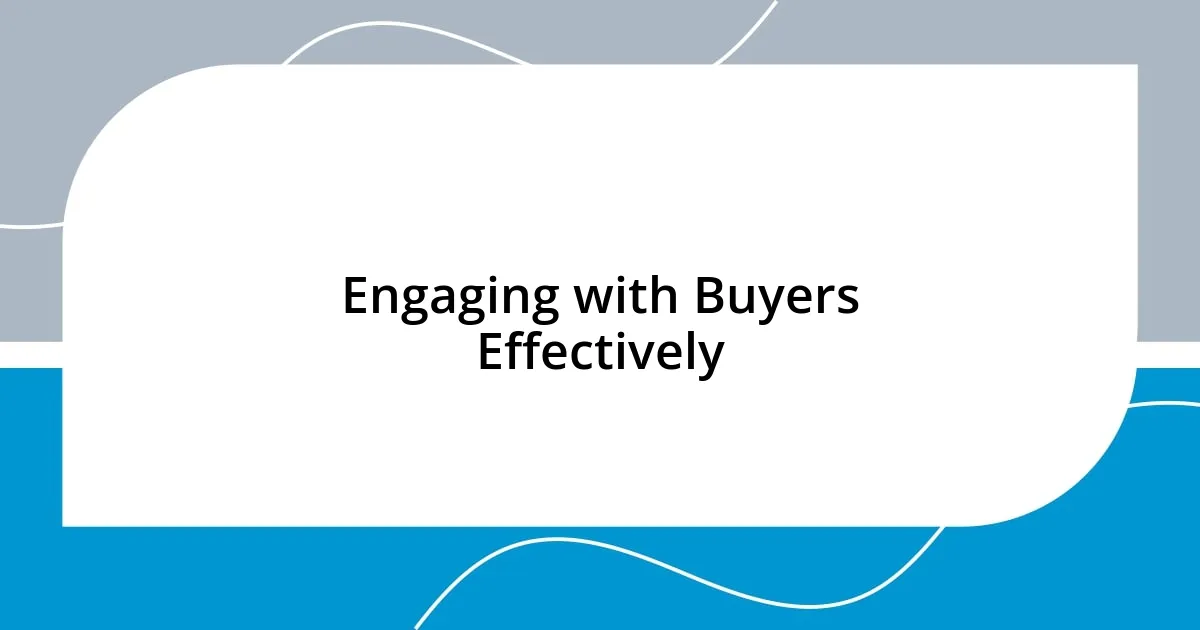
Engaging with Buyers Effectively
One of the best ways I’ve found to engage with buyers effectively is through personalized communication. I’ve discovered that a simple “thank you for your interest” goes a long way. When I was selling a unique handmade piece of jewelry, I reached out to one curious buyer with a personal note about the inspiration behind the design. Their instant response was overwhelmingly positive, and it turned into a sale—a connection was made that turned curiosity into enthusiasm. Have you ever thought about how a small, personalized touch can encourage someone to make a purchase?
Prompt responses can also be crucial. I recall listing a vintage camera that generated several queries simultaneously. I made it a point to reply within minutes, even while juggling other tasks. To my surprise, being quick and attentive not only resulted in a sale but also built rapport with my buyers. People can sense when they’re valued, and I think that makes them more likely to close the deal. Are you ready to prioritize speed in your conversations?
Lastly, I’ve learned that maintaining a friendly tone is key. When buyers ask questions, it’s easy to slip into a formal approach, but I’ve found that a casual and approachable demeanor makes a difference. For instance, I once was asked whether a dress was suitable for a wedding. Instead of a dry reply, I shared a fun story about a wedding I attended where similar attire was perfect. That little bit of personality led to a great connection, and ultimately, they bought the dress. How do you think a bit of humor and warmth would shape your interactions?
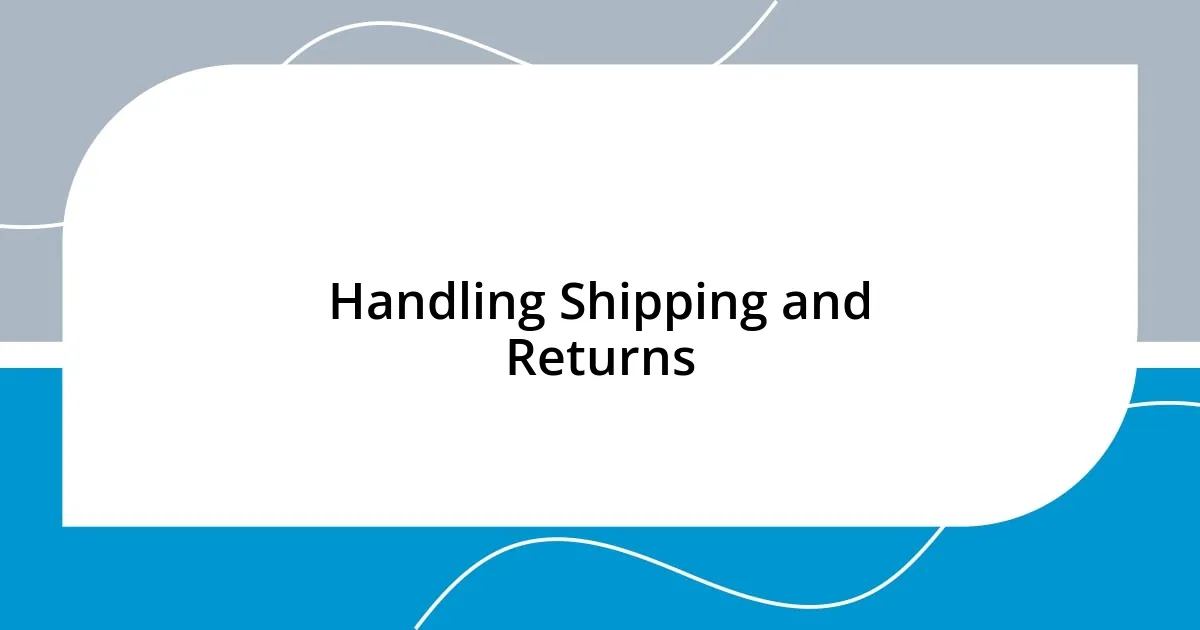
Handling Shipping and Returns
Shipping and returns can be a real turning point in the resale market. I remember the first time I had to ship a fragile item—a vintage vase. I went the extra mile by wrapping it securely in bubble wrap and using a sturdy box, which, to my relief, ensured it arrived intact. It’s funny how a few extra minutes spent on packaging can save you a headache later. Doesn’t it feel rewarding when you know you’ve done everything possible to make sure the buyer is delighted?
When it comes to returns, I’ve learned that having a clear and fair policy can earn you trust. I once sold a pair of shoes that didn’t quite fit my buyer as expected. Instead of turning it into a contentious issue, I encouraged them to return the shoes with a full refund. This approach not only resulted in a positive review but also reassured future buyers that I stand by my products. How often do we think about how a little flexibility can foster long-term customer relationships?
Communicating shipping updates is another crucial element I’ve adopted. For instance, I began sending tracking information for my packages after experiencing a hefty delay with one shipment. By elevating transparency, I noticed that my buyers felt more at ease throughout the process. It’s intriguing how a simple update can eliminate anxiety—have you ever felt that rush of relief when you know where your purchase is?











